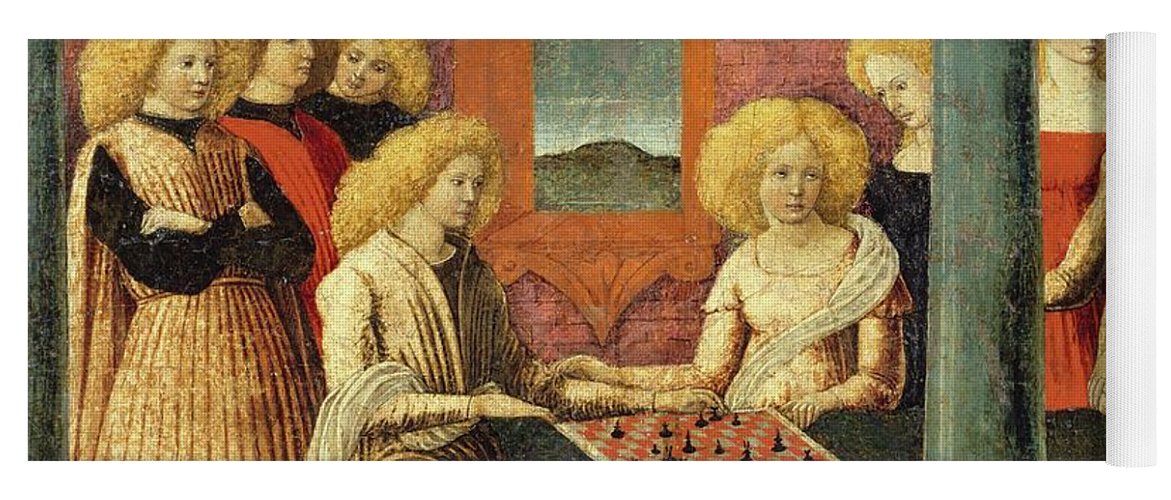The Development of Board Games: From Idle Activities to International Icing

In the dynamic tapestry of human leisure and recreation, board games have carved an enduring niche, evolving through millennia from ancient pastimes to modern phenomena. This article embarks on a journey through the historical epochs of board gaming, exploring its spiritual roots in ancient civilizations, its regal prominence in medieval courts and its contemporary resurgence in the 21st century.
Alongside this evolution of board games, the availability of websites such as Game Rules has facilitated an era where learning how to play diverse games has been made easier. It is continually bridging the gap between tradition and modernity in board games.
The Birth of Board Games in Antiquity
Board games, those timeless repositories of strategy and skill, find their origins in the shadows of ancient civilizations. Unearthing the archaeological roots of these games reveals a fascinating journey that stretches back over five millennia. Among the earliest known examples is the Egyptian game of Senet, which not only entertained, but held cultural and spiritual significance as well.
Senet, dating back over 5,000 years, was more than a pastime. It reflected the Egyptian belief in an afterlife, with the board representing the journey of the deceased through the underworld. The movement of pieces was not merely chance; it symbolized the trials and tribulations one might face in the afterlife. Senet, then, becomes not just a game but a bridge between the earthly and the divine, offering insights into the spiritual beliefs of ancient Egyptians.
In India, Chaturanga is another ancient board game that emerged around the 6th century. Considered the precursor to chess, Chaturanga mirrored the stratification of Indian society into four classes – the Brahmins, Kshatriyas, Vaishyas and Shudras. The movement of the pieces on the board represented the intricate dance of power and hierarchy in ancient India. Chaturanga was more than a board game; it was a living representation of societal norms, providing a window into the cultural dynamics of its time.
A Northern European board game, Tablut, also known as Hnefatafl, carried a storied history that lay lost and forgotten for centuries. In 1732, the renowned botanist Carl von Linné stumbled upon Saamis in Lapland engaged in a mysterious board game. Little did he know, he was witnessing the resurrection of Hnefatafl, now recognized as Tablut among the Saamis.
Coincidentally (no, really) Ancient Origins has just launched their version of this classic strategic game, based on the most accepted rules, with a beautifully designed and individually handcrafted product, available from the Ancient Origins shop here.

Ancient Origins Tablut game board and pieces, now available. (Ancient Origins)
Meanwhile, in ancient China, the game of Go took center stage. With its simple rules but complex strategies, Go became a symbol of intellectual prowess. The black and white stones on the board represented the dualistic nature of existence, and each move sought harmony and balance. More than a game of strategy, Go embodied philosophical principles, reflecting the profound connection between gameplay and cultural philosophy.

One of the board games which was a staple within medieval European courts was chess. (totojang1977 / Adobe Stock)
Regal Pursuits: Board Games in the Courts of Nobility
Fast forward to medieval Europe, where board games transitioned from common pastimes to exclusive activities within the royal courts. Chess, with its intricate rules and symbolic pieces, became a staple in European courts, embodying the hierarchical structures and military strategies prevalent in feudal societies. The chessboard became a battlefield, each piece a representation of the nobility, clergy and military.
The Royal Game of Ur, discovered in the ancient city of Ur in Mesopotamia, offers another glimpse into the aristocratic indulgence in board games. Dating back to around 2600 BC, this game featured a beautifully adorned board and distinctive pyramid-shaped dice. It was not just a game but a testament to the craftsmanship associated with aristocratic leisure.
You can also play this game, as it is another in the Ancient Origins growing series of ancient board games available now.
In the royal courts, board games served as entertainment and tools for political and social expression. Through its complex maneuvers, chess reflected the dynamics of medieval warfare and courtly intrigue. The movement of the king, queen, bishops, knights, rooks and pawns on the chessboard represented the various players in the political landscape, each with distinct roles and powers. Board games, once accessible to all, became exclusive pastimes, reinforcing class distinctions and contributing to the mystique surrounding these games.
Industrial Revolution and the Rise of Mass Entertainment
The 19th century ushered in a new chapter in the history of board games with the Industrial Revolution. Mass production made board games more affordable and accessible to the general public. During this era, games like Monopoly emerged, becoming cultural phenomena that reflected not only the economic concepts of the time but also provided a means for social interaction during the challenging period of the Great Depression.
Monopoly, patented in 1935, offered players a glimpse into the world of real estate and capitalism. Its success lay not only in its gameplay but in its ability to capture the economic struggles and aspirations of a society facing financial hardship. It marked a shift from exclusive aristocratic pastimes to games that resonated with the masses, democratizing board games and transforming them into mass entertainment.

Detail from a Monopoly board. (Rich Brooks / CC BY 2.0)
Tabletop Renaissance: Board Games in the 21st Century
The 21st century ushered in a renaissance for board games, marked by the emergence of modern classics that captivated a global audience. Settlers of Catan, Carcassonne and Ticket to Ride are among the titles that have redefined the landscape of tabletop gaming, appealing to seasoned enthusiasts and newcomers alike. Over time they have become modern classics.
Settlers of Catan, designed in 1995, introduced a novel resource management and trading concept, providing a fresh and dynamic gaming experience. The game’s modular board and emphasis on negotiation elevated it to cult status, making it a cornerstone of the modern board gaming renaissance. With its tile-laying mechanics and strategic depth, Carcassonne became another standout, captivating players with its simplicity and depth.
Ticket to Ride, introduced in 2004, combined strategy with a touch of nostalgia as players embarked on railway adventures across various continents. The game’s accessible mechanics and engaging gameplay made it a hit, appealing to a broad audience beyond traditional board gamers. These modern classics represented a departure from the traditional competitive model, fostering a sense of camaraderie and encouraging social interactions.
Board Game Cafes and Conventions: Fostering Global Community
The resurgence of interest in board games gave rise to a new phenomenon – the board game cafe. These establishments, now found in cities worldwide, provide dedicated spaces for enthusiasts to gather, play and share their love for tabletop games. Board game cafes offer a welcoming environment for experienced players and those new to the hobby, fostering community and camaraderie.
Board game conventions have also become integral to the tabletop gaming culture, serving as hubs for enthusiasts to explore new releases, participate in tournaments and connect with fellow players. Events like Gen Con and Essen Spiel attract thousands of attendees, turning them into global celebrations of board gaming. These conventions showcase the diversity of games and provide a platform for designers to unveil their creations to a global audience.
The 21st-century tabletop renaissance is characterized by inclusivity, diversity and a celebration of creativity. Modern board games, with their innovative mechanics and thematic richness, have become a cultural phenomenon, transcending borders and bringing people together.

Representational image of people playing board games in a café. (Magryt / Adobe Stock)
Digital Revolution: Board Games in the Technological Age
The technological age has brought about a significant transformation in how board games are played and experienced. Digital adaptations and online platforms have become integral to the modern gaming landscape. Virtual versions of classic board games allow players to enjoy their favorite titles remotely, connecting with friends and opponents globally. Platforms like Tabletopia and Tabletop Simulator offer virtual spaces where players can recreate the physical board game experience in a digital environment.
Augmented reality (AR) and virtual reality (VR) have further elevated the board gaming experience. These immersive technologies transport players to fantastical worlds or historical settings, enhancing the gaming experience. AR and VR have not replaced traditional board games but have expanded the horizons of what is possible, offering purists and tech enthusiasts diverse options.
The Evolving History of Board Games
Tracking the growth of board games from their ancient beginnings to their current popularity shows that they are more than just games; they represent human history, cultural expression and technical advancement. From the spiritual significance of ancient games to the strategic intricacies of medieval pastimes and the globalized appeal of modern classics, board games have transcended cultural and temporal boundaries.
The democratization of board game design has allowed diverse voices to contribute to the industry, enriching the gaming landscape with fresh ideas and perspectives. Crowdfunding has empowered independent creators, creating a space for innovation that goes beyond the confines of traditional publishing.
The digital revolution has ushered in a new era of accessibility and immersion, offering players a choice between physical and virtual experiences. Technology has not replaced traditional board games but has expanded the possibilities, creating a harmonious coexistence between the analog and digital realms.
Once confined to the exclusive circles of nobility, board games have become inclusive and global. They are bridges that connect people across cultures, fostering communities and cultural exchanges. The educational impact of board games cannot be overstated, as they continue to be valuable tools for learning and skill development.
As you roll the dice, move your pawns and strategize your next move, you participate in a tradition that has spanned millennia – reminding us of the enduring pleasure of human connection, intellectual challenge, and shared experiences. In an ever-changing world, the constancy of board games stands as a testament to the timeless joy derived from these intricate and ever-evolving pastimes.